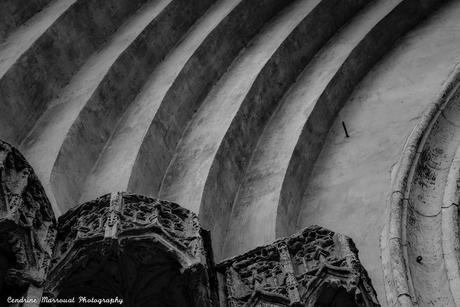Toulouse is famous for its Capitouls .
The council of chief magistrates was born after Count Raymond IV's death (1152). Eight men were selected for a year to rule the state. The number increased to 12 in 1176 and 24 in 1222. Each of them represented a district of the city.
The Capitouls settled in the Capitole, the newly built town council headquarters. They "granted themselves the rights of police, trade, imposition and started some conflicts with the closest cities. Toulouse was usually victorious, extending the domination of the patria tolosana. Despite the intervention of the king, the administration of the Capitouls gave a relative independence to the city, for nearly 600 years, until the French Revolution." (Source: Wikipedia)
Only Catholic, married men of over 25 years of age, who owned a house in Toulouse and worked in a field like the law or trade could become Capitouls.
After a series of disasters, including the Black Plague, massive floods, and the Great Fire of 1463, Toulouse enjoyed a golden period known as the Pastel era (1463-1560):
"Pastel is the blue gold of Toulouse. During the Renaissance, it made the Toulouse merchants very wealthy. Today, pastel is again being used to colour textiles and in the manufacturing of cosmetic products, thanks to the dermatological properties of its oil." (Source: Office de Tourisme de Toulouse)
(More information on woad can be found here.)
Many of the most beautiful private mansions - "hôtels particuliers" - were built in that era. The best example is Hôtel d'Assézat, near the Pont Neuf.
Unfortunately, woad was eclipsed by the discovery of indigo in India...
Original size: 6030 × 4028 pixels
Photo 1: A view of Espace EDF Bazacle and Pont des Catalans.The Bazacle (from the Latin word "vadaculum" or "little ford") has been used since the 12th century. The water being at its shallowest there, the first bridge across the Garonne River was built at that spot. Its adjacent mills even impressed Rabelais.
From 1890 to 1946, a hydroelectric power station supplied Toulouse with electricity. Now, the space is used as a museum that features temporary exhibitions, a terrace overhanging the river, a photo gallery, and a fish pass. You can even see working turbines.
Buy a print here.

Original size: 6030 × 4028 pixels
Photo 2: A closeup of Saint Nicolas Church.(Saint Nicolas is the patron saint of sailors and those who are afraid of sinking.)

Original size: 6030 × 4028 pixels
Original size: 6030 × 4028 pixels
Buy a print here.
Original size: 6030 × 4028 pixels
Buy a print here.
Original size: 6030 × 4028 pixels
Buy a print here.
Photos 3-6: Hyppolite Olivier Fountain.A gift from Chocolate Maker Hyppolite Olivier in 1886, the fountain commemorates the flood that destroyed 1,400 homes and claimed 210 lives in June 1875. It is located in the Saint-Cyprien neighborhood, one of the most affected areas in the city.
Original size: 6030 × 4028 pixels
Buy a print here.
Original size: 6030 × 4028 pixels
Buy a print here.
Original size: 6030 × 4028 pixels
Buy a print here.
Photos 7-9: Canal du Midi.The Canal du Midi is a 240-km-long canal that connects Toulouse to the Mediterranean Sea via the Étang de Thau. It is one of the oldest European canals still in operation.
Construction lasted from 1666 to 1681, under the supervision of Pierre-Paul Riquet whose goal was to provide an inland water route. "The key challenge was to convey water from the Montagne Noire (Black Mountains) to the Seuil de Naurouze, the highest point of the canal." (Source: Wikipedia)
The Canal du Midi has 91 working locks that are still operated by keepers. It has been a UNESCO World Heritage Site since 1996.
Original size: 6030 × 4028 pixels
Buy a print here.
Original size: 6030 × 4028 pixels
Buy a print here.
Photos 10-11: Pont Neuf.Built in the 16th century, the Pont Neuf ("New Bridge") is a non-symmetrical bridge. Its longest arch is the third one from the left - as you can see on the photos.
"The openings through the piers were originally supposed to represent the face and mane of a lion. A triumphal archway added in 1686 constricted traffic and was removed in 1860." (Source: Wikipedia)
Original size: 6030 × 4028 pixels
Buy a print here.
Original size: 6030 × 4028 pixels
Buy a print here.
Original size: 6030 × 4028 pixels
Buy a print here.
Photos 12-14: Canal de Brienne.The Canal de Brienne is a short canal that starts at Bazacle and connects the Garonne River to the Canal du Midi and the Canal de Garonne. They meet at the Ponts Jumeaux ("twin bridges").
The 18th-century canal owes its name to Etienne Charles de Loménie de Brienne (1727-1794), archbishop of Toulouse.

Original size: 6030 × 4028 pixels
See you next week for part 7! View more photos of my visit to France here.
